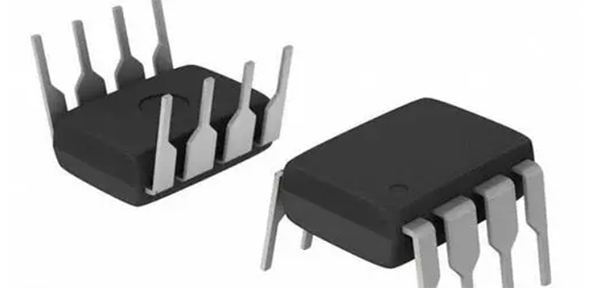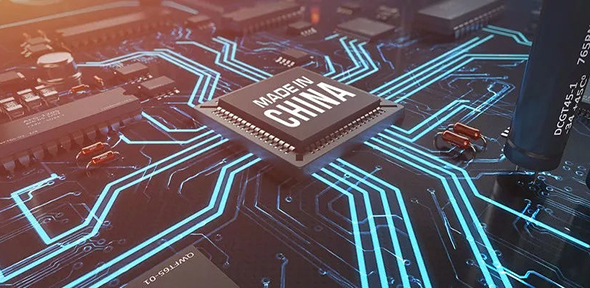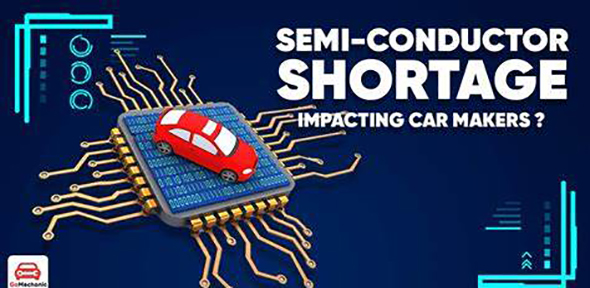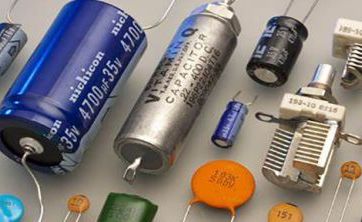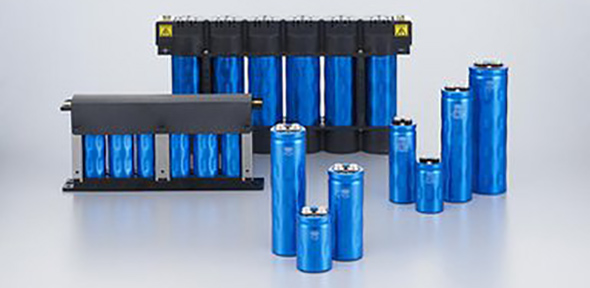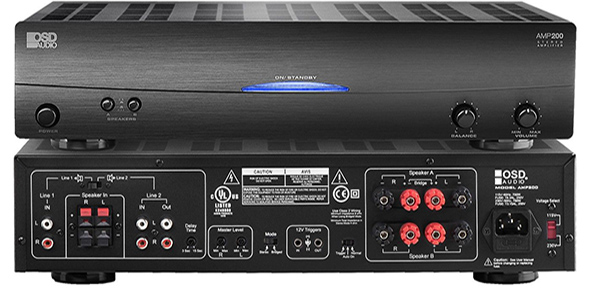how intel financialized lost leadership semiconductor
Intel reported its second quarter earnings, easily beating analysts' consensus estimates. However, right after the earnings call with management, the stock plummeted over 16%. Seven analysts downgraded the stock to sell, and the common theme across all the downgrades was that their 7nm process had been delayed again, meaning Intel was behind in process technology and well behind TSMC.
On the earnings call, Intel reported revenue of $19.7 billion versus Wall Street estimates of $18.54 billion and earnings per share of $1.23 versus Wall Street estimates of $1.12, but it also released more bad news about its manufacturing process technology. Jared Weisfeld, an analyst at Jefferies, wrote in a report issued after the earnings call:
Comments about 7nm changed many people's views as the company rolled out its roadmap and outsourced CPU manufacturing to third-party manufacturers officially became part of the discussion. Compared to previous expectations, the company sees a six-month production lag for 7nm products and a 12-month lag to address yield issues for volume production. The company has identified the defect causing the delay, which they claim is the root cause of the problem, and believe there is no fundamental barrier.
There's a lot to unpack in this paragraph, but the key question it raises is why would Intel, which has been the undisputed leader in manufacturing process technology for decades, which has enabled it to deliver the highest-performing, highest-margin personal computer and server CPUs to the market, lose its lead so dramatically?
I believe that Intel is in the midst of what Andy Grove calls a "strategic inflection point" (SIP) that goes right to the heart of its business. The last time Intel faced such a survival SIP was in 1984, when the market share of Intel's core business, memory chips, was declining and it turned into a microprocessor company. In Grove's book Only Paranoia Can Survive, he describes how Intel made this transition and, as a result, became the world's largest and most influential semiconductor company in 1995. Clearly, Grove made the right decision to move to microprocessors, as it moved the company out of the highly competitive, low-margin commodity business and into a highly profitable business offering highly differentiated and proprietary products with well over 90 percent market share.
Intel maintained its position as the world's largest semiconductor company until 2017, when Samsung overtook it with revenue and TSMC caught up in terms of manufacturing process technology. To understand how Intel became the dominant semiconductor company, maintained that position for more than 20 years, and then lost it, one must go back to 1985, when Intel's 386 chip was its dominant product in the then-emerging PC market.
In switching from a memory-based core to to a microprocessor-based core, Grove did not fully realize at the time how important the move would later become. At the time, PCs were still a relatively small market and ran Microsoft's MS-DOS, which had a clunky, text-based user interface. Compared to mainframes, PCs were underpowered and could only perform simple tasks such as word processing and spreadsheets, while mainframes, minicomputers and workstations continued to be used for "real" computer work. No one could have imagined then that Intel's microprocessors would be the brains of the entire computer industry for decades to come. When I joined Intel in 1983, no one was even working with PCs at Intel. As a software developer, I was coding for the Digital Equipment Corporation (DEC) VAX minicomputer and Apollo workstations (both of which no longer exist).
What Intel was able to accomplish was to use its advanced manufacturing techniques, honed through the bulk manufacture of memory chips, to create an innovative engine that, using the tight coupling of Intel's microprocessor design and manufacturing capabilities, would enable CPU designers with more and more transistors to be able to build a new generation of microprocessors that would be faster and less expensive. Moore's Law is not so much a law as it is a mandate to Intel's manufacturing side to keep refining their process technology and shrinking the size of transistors in order to fit more transistors on a single piece of silicon, while also allowing the processor to be clocked faster. To be exact, the 386 has 275,000 transistors, while the next-generation 486 I'm working on has over a million transistors. Today's Core i7 has about 3 billion transistors.
I remember meeting with engineers from mainframe and minicomputer companies to get feedback on the 486, because of course we wanted them to use the chip in their next-generation systems, but what we got was indeed their derision that our processors were like toys. Still, they were very generous with their suggestions and explained to us how their advanced designs worked and why we could never meet their requirements, but what they didn't consider was that as transistor budgets grow, Intel engineers are able to add all these kinds of advanced features to their CPUs and more, ultimately outperforming their proprietary systems in performance and at a much lower cost.
The result of Intel's rapid innovation and improved price performance of x86 CPUs is that it created a strategic inflection point for the entire computer industry. To explain this, I will refer to what Grove wrote in his book, Only the Paranoid Survive.
The computer industry used to be vertically distributed. As the diagram below shows, this meant that an old-fashioned computer company would have its own supply of semiconductor chips, build its own computers from those chips in its own factories according to its own designs, develop its own operating system software, and sell its own application software in the marketplace (which could handle things like incoming and outgoing accounts, booking airline tickets, or department store inventory management). The company's own chips, computers, operating systems, and applications would be sold by the company's sales force as ancillary equipment. This is what we call vertical distribution. Note how often the word "own" comes up; in fact, we could also use the term "proprietary," which is essentially synonymous with the old-style computer industry.
There are advantages and disadvantages to this type of vertical integration. The advantage is that when a company develops each component by itself, the components work better together as a whole. The disadvantage is that customers are locked into one supplier and it limits choices. Other more important disadvantages are that the speed of innovation is constrained to the slowest link in the chain and that the market is more fragmented, which prevents any one company from achieving economies of scale. The end result is that the computer industry is made up of separate islands with no interoperability or scale. Once customers chose one solution, they were stuck in a rut for a long time and paid more than they should have.
Then the microprocessor came along and it became the basic building block of the industry. Economies of scale came into play, greatly accelerating the rate of improvement, which also greatly expanded the market for PCs, and then later servers, which eventually replaced proprietary systems. The following quote from Grove's book expresses.
With the passage of time, this changed the overall structure of the computer industry, and a new horizontal industrial system emerged. In this new model, no company had its own set of devices anymore. Customers can pick a chip from the horizontal structure of the chip counter, from the computer counter to pick a brand of computer, from the operating system counter to pick an operating system, from the retail store or computer supermarket shelves at random to choose a finished application software; then all this back home, and then put them together, and expect them to work together. It may be a little laborious, but people are happy to endure the pain and work harder because now they can buy back a computer system that used to cost 10 times as much for only $2000. This attractive prospect allowed customers to overcome existing deficiencies in order to take full advantage of the novel power of business processing. Gradually the structure of the entire computer industry changed, and an emerging horizontal industry system emerged as shown in the chart.
As the industry shifted from vertical to horizontal, many computer companies were not immune to the strategic inflection point. many companies such as DEC, Unisys, Apollo, Data General, Prime, Wang, etc. went out of business or were acquired by PC companies, such as Compaq's acquisition of DEC. Grove (Grove) explains that the main lessons of the dramatic changes in the computer industry One of them is.
Due to the pervasive functional specialization, horizontal industries are generally more cost-efficient than vertical industries because of their prominent functional characteristics. Simply put, it is much harder to be best in class in multiple areas than it is to lead in just one area.
When the industry model shifts from vertical to horizontal, each player has to go through a strategic turning point. The end result is that, as time passes, more and more companies must follow these rules.
This modularity theory is also examined in depth in Clayton Christensen's paper on disruption, disintegration and the dissipation of micromanagement, and in more detail in his book, The Innovator's Solution, where he states that
Modularity has a profound impact on the structure of industries because it enables independent, non-integrated organizations to sell, buy, and assemble components and subsystems. Whereas in an interdependent world you would have to manufacture all the key elements of a system to make any one of them, in a modular world you can prosper by outsourcing or providing just one element. Eventually, the specification of modular interfaces will become the industry standard. When this happens, companies can mix and match components from the best suppliers to easily respond to the specific needs of individual customers.
By 1995, this transformation was in full swing, and the transition from the "old computer industry" to the "new computer industry" was complete, with Intel winning. However, Intel missed the next inflection point, and missing this inflection point laid the seeds of the problems it faces today.
The strategic inflection point that Intel missed was mobile devices, particularly the Apple iPhone, which was launched in January 2007. because Intel x86 CPUs consume a lot of power, Apple chose to use chips based on the more power-efficient ARM architecture. Coincidentally, Intel acquired StrongARM from Digital Equipment Corporation (Digital Equipment Corporation) and then used it for the XScale processor, a low-power chip designed for mobile devices (which was later sold to Marvell in 2006). Intel, of course, has the design and manufacturing capabilities to design and supply the chips Apple needs in the new iPhone. Apple had already moved from IBM PowerPC chips to x86 chips in the Mac back then, and Jobs had a very good relationship with Andy Grove and later Paul Otellini, who had become CEO by the time he designed the iPhone. as Otellini described it to Alexis Madrigal in a 2013 interview with The Atlantic
We didn't end up winning it or passing it, depending on how you want to look at it. And if we had done it, the world would have been a very different place." Otellini told me in a two-hour conversation during his last month at Intel." What you have to remember is that this was before the iPhone was launched and no one knew what the iPhone would do ...... At the end of the day, there was a chip that they were interested in, they wanted to pay a certain price, not a penny more, and that price was below what we predicted it would cost. I don't see that. It's not a thing that can be made up by volume. In hindsight, the predicted cost was wrong, and the volume was 100 times what everyone thought it would be.
The reluctance to win Apple meant that Intel was shut out of participating in the cell phone market, but more importantly, it gave TSMC an opportunity to become the manufacturer of choice for the chips used in Apple's iPhone and all other Android-based mobile devices. It takes the horizontal layer of Intel's control in the semiconductor space and splits it into two narrower layers. One layer is the ARM-based CPU architecture that ultimately dominates the cell phone market; the other layer is the manufacturing of these devices, which TSMC ultimately dominates. As ARM will license its design to other "fabless" chip design companies, such as Qualcomm, which greatly increases the number of companies innovating around the ARM architecture, the scale of which Intel can not dream of, which accelerates the speed and variety of innovation, but are still compatible with the ARM architecture, so the software designed for cell phones has a much larger market. In addition, TSMC, the chipmaker of choice, was able to scale up and enjoy huge economies of scale, which then allowed its process technology to advance at a much faster pace, eventually overtaking Intel as it has recently. Even Samsung was able to catch up with Intel, first as a supplier of memory chips and later as a supplier of more advanced logic chips. The result is that leadership in the mobile era has shifted from Intel and Microsoft, sometimes referred to as Wintel, to ARM and TSMC.
Exacerbating these external events is also Intel's poor leadership under Brian Krzanic (Brian Krzanic), which has led to an accelerated pace of senior management departures. Even more recently, Apple has managed to attract many of Intel's top VLSI chip designers in Israel and Oregon to work on designing Apple's processors for its next-generation iPhones and iPads and soon Macbooks.
Intel may be facing a strategic inflection point as big today as it was in 1984, but the big difference is that its core data center business is highly profitable and growing due to the continued strength of cloud computing, and Intel remains dominant as a supplier of CPUs used in cloud data centers. This segment requires very high-performance CPUs, and power consumption, while a factor, is not as important as it is in battery-powered mobile devices. However, there are a growing number of fabless chip design companies, including Amazon, Google, Huawei, and startups such as Ampere, working on ARM-based high-performance CPUs for data centers, a market that will become even larger with the development of edge computing in future 5G networks. Since TSMC will produce these ARM server chips, and the new ARM-based chips in the Macbook are rumored to be faster (and less power-efficient) than Intel's CPUs, Intel's advantage in even its core data center business will be diminished.
In a January research note, Marc Lipacis, an equity analyst at Jefferies, made a strong case that Intel should spin off its manufacturing business, which could then compete directly with TSMC. His analysis was that Intel would add $19 to its stock price by going fabless.
By not playing a leading role in the growth of the cell phone market, Intel is losing not just market share and revenue, but its leadership role in the next era of computing and communications. Intel's role in the PC era was more than just providing CPUs because it controlled the ecosystem, which allowed it to influence the direction of technology to its benefit. In the mobile computing era, Intel left the leadership role of the mobile ecosystem to ARM and TSMC.
As mentioned earlier, Intel also lost a large number of senior executives and recruited new management from fabless companies who may be more receptive to spinning off the manufacturing part of Intel. The new CEO, Bob Swan, was brought in from outside the company, first as CFO and then promoted to CEO, so he may be less attached to the old and have the courage to do something bold. On the other hand, the board still has many legacy directors who may not be receptive to such a bold but necessary move. The market has certainly made its position clear, as reflected by the stock price. As Grove mentioned in his book "Only the Paranoid Survive" about such changes, even if Intel has enough inertia to continue on its current path, macro trends will eventually catch up with it, and if it doesn't manage to get through this strategic inflection point, it will lose its dominant position in the technology industry.
By not playing a leadership role in the growth of the cell phone market, Intel has not only lost market share and revenue, but also lost its leadership position in the next era of computing and communications. Intel's role in the PC era is no longer limited to providing CPUs as it controls the ecosystem, thus enabling it to influence the direction of technology development to benefit from it. In the mobile computing era, Intel is no longer there, leaving the role of mobile ecosystem leader to ARM and TSMC.
As mentioned earlier, Intel also lost a large number of senior executives and recruited new management from fabless companies who may prefer to divest Intel's manufacturing division. The new CEO, Bob Swan, was hired from outside the company, initially as CFO and later promoted to CEO, so he may be less attached to the old ways and have the courage to do something bold. On the other hand, the board still has many traditional directors who may not be receptive to such a bold but necessary move. As the stock price rises, the market has certainly made its position clear. History does not favor Intel's chances of catching up on process technology, nor does it favor the external 10x power of TSMC and ARM. Grove refers to these types of changes in his book, Only Paranoia Survives. , cannot be forgotten. Even if Intel has enough inertia to keep going, macro trends will eventually catch up with it, and if it fails to manage through this strategic inflection point, it will lose its leadership in the technology industry.
